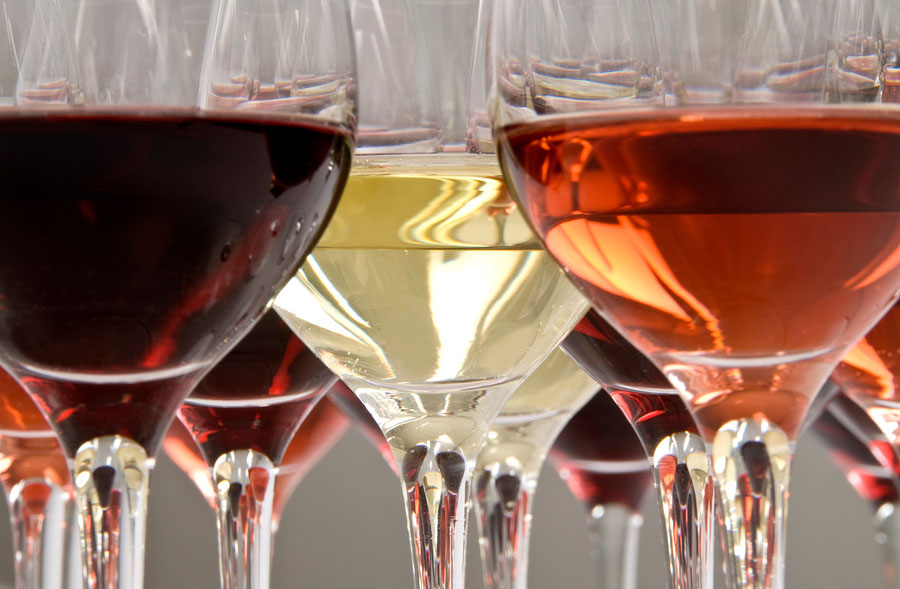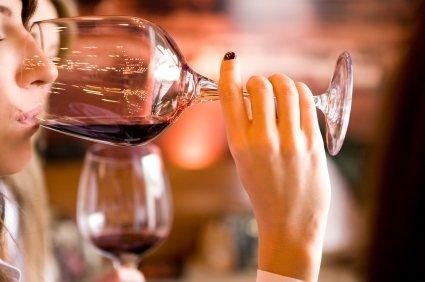My WineShopper
WINE TASTING TIPS
BASIC TIPS FOR WINE TASTING
Learning how to taste wine is a great way to deepen your appreciation for both wines and winemakers. Wine tasting is about look, smell and taste. Start with your basic senses and expand from there. Keep in mind that you can smell thousands of unique scents, but your taste perception is limited to salty, sweet, sour and bitter. It is the combination of smell and taste that allows you to discern flavor.
LOOK AT THE WINE
Tilting the glass a bit can make it easier to see the way the color changes from the center to the edges. Holding the glass in front of a white background, such as a napkin, tablecloth, or sheet of paper, is another good way to make out the wine’s true color. Look for the color of the wine and the clarity. Intensity, depth or saturation of color are not necessarily linear with quality. White wines become darker as they age while time causes red wines to lose their color turning more brownish, often with a small amount of harmless, dark red sediment in the bottom of the bottle or glass. This is also a good time to catch a preliminary sniff of the wine so you can compare its fragrance after swirling. This will also allow you to check for any off odors that might indicate spoiled (corked) wine.

SWIRL THE WINE IN YOUR GLASS
This is to increase the surface area of the wine by spreading it over the inside of the glass allowing them to escape from solution and reach your nose. It also allows some oxygen into the wine, which will help its aromas open up.
NOTE THE WINE’S VISCOSITY (HOW SLOWLY IT RUNS BACK DOWN THE SIDE OF THE GLASS) WHILE YOU’RE SWIRLING
More viscous wines are said to have “legs,” and are likely to be more alcoholic. Outside of looking pretty, this has no relation to a wine’s quality but may indicate a more full bodied wine.
SNIFF THE WINE
Initially you should hold the glass a few inches from your nose. Then let your nose go into the glass. What do you smell?
SIP THE WINE, BUT DO NOT SWALLOW IT UNTIL YOU’RE FINISHED WITH THIS STEP
The difference between drinking and tasting is expectorating! Roll the wine around in your mouth exposing it to all of your taste buds. You will only be able to detect sweet, sour, salty, bitter and umami (think: meaty or savory). Pay attention to the texture and other tactile sensations such as an apparent sense of weight or body.
ASPIRATE THROUGH THE WINE
With your lips pursed as if you were to whistle, draw some air into your mouth and exhale through your nose. This liberates the aromas for the wine and allows them to reach your nose where they can be detected. The nose is the only place where you can detect a wine’s aromas. However, the enzymes and other compounds in your mouth and saliva alter some of a wine’s aromatic compounds. By aspirating through the wine, you are looking for any new aromas liberated by the wine’s interaction with the environment of your mouth.

TAKE ANOTHER SIP, BUT THIS TIME (ESPECIALLY IF YOU ARE DRINKING A RED WINE) INTRODUCE AIR WITH IT.
In other words, slurp the wine (without making a loud slurping noise, of course). Note the subtle differences in flavor and texture.
GLUTEN FREE WINESHOPPER ALBUQUERQUE © 2019-2022 ALL RIGHTS RESERVED